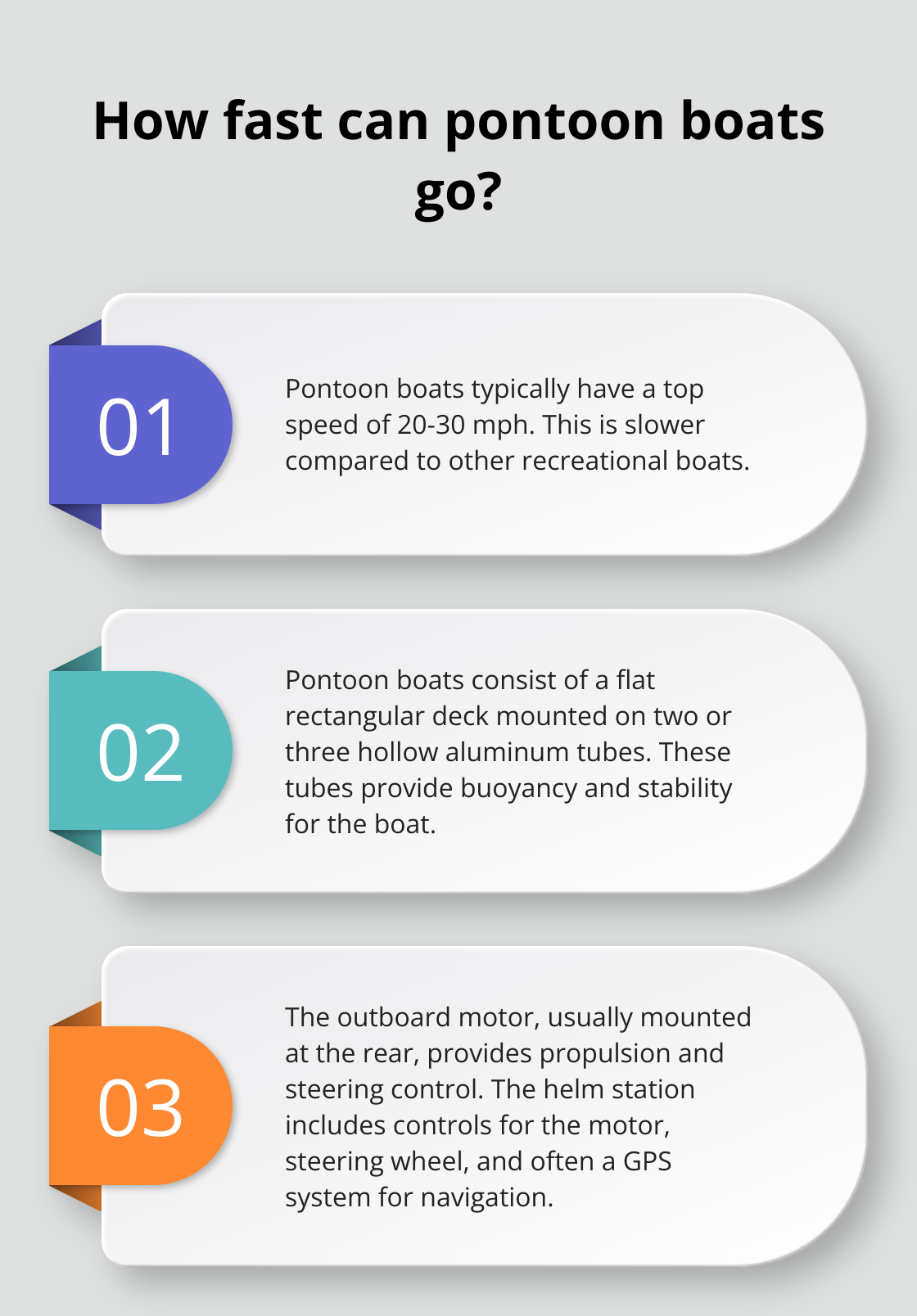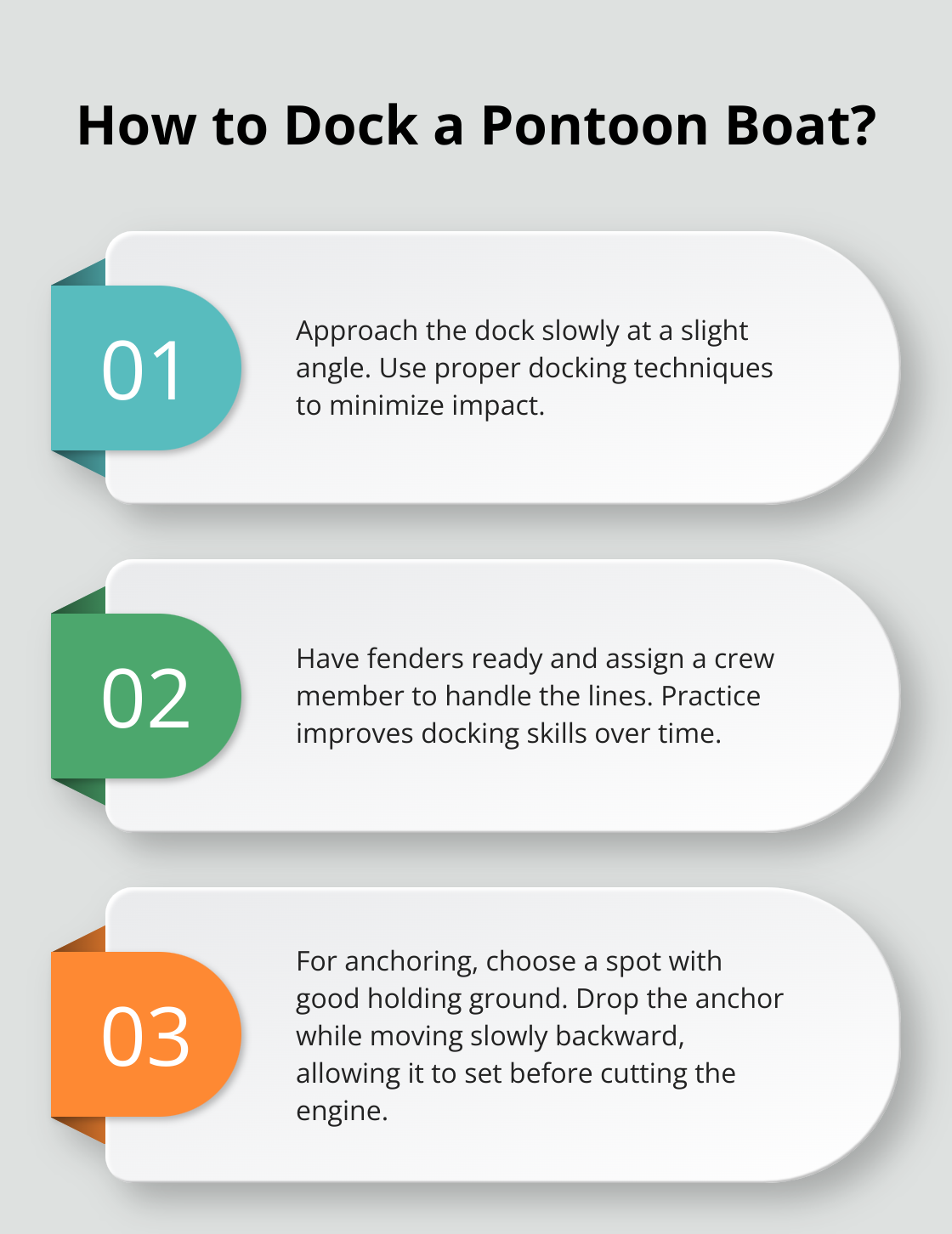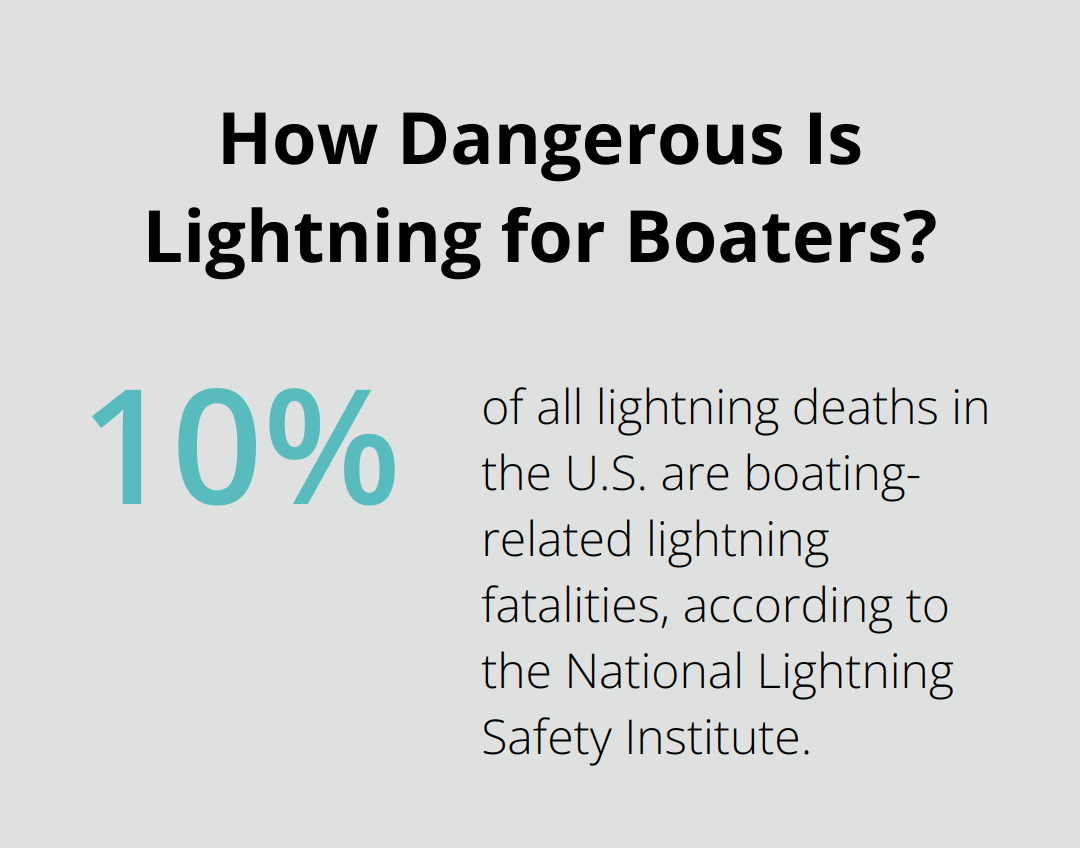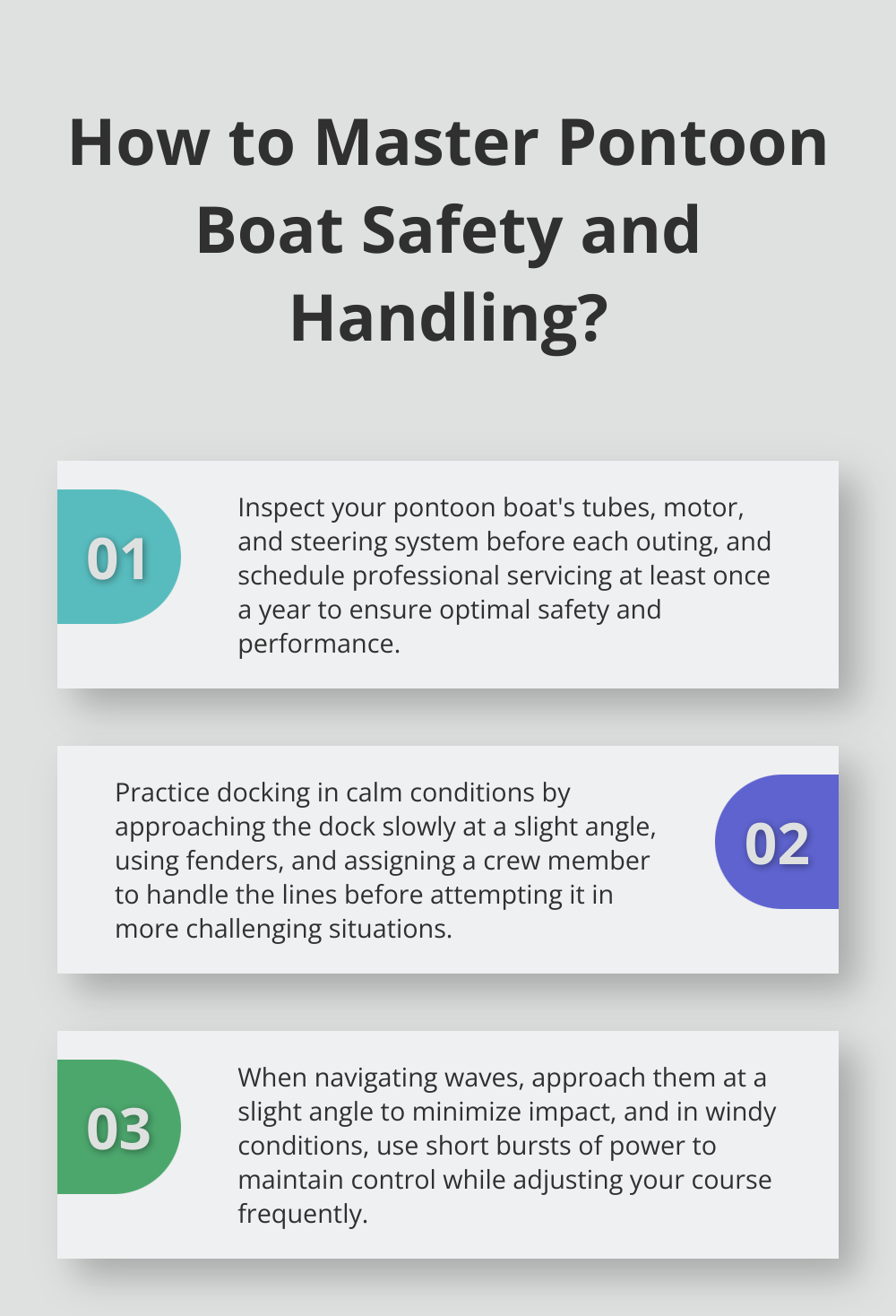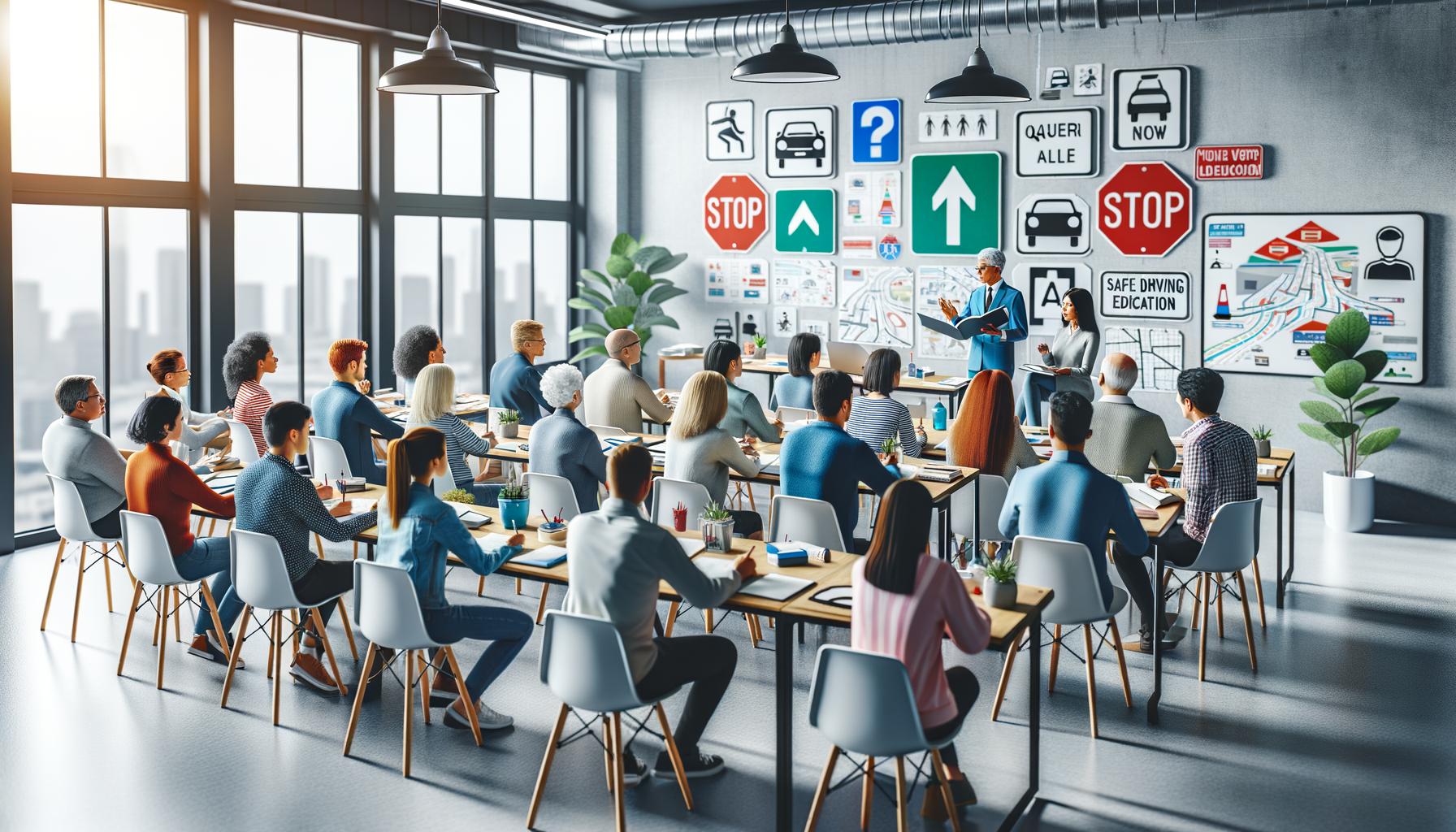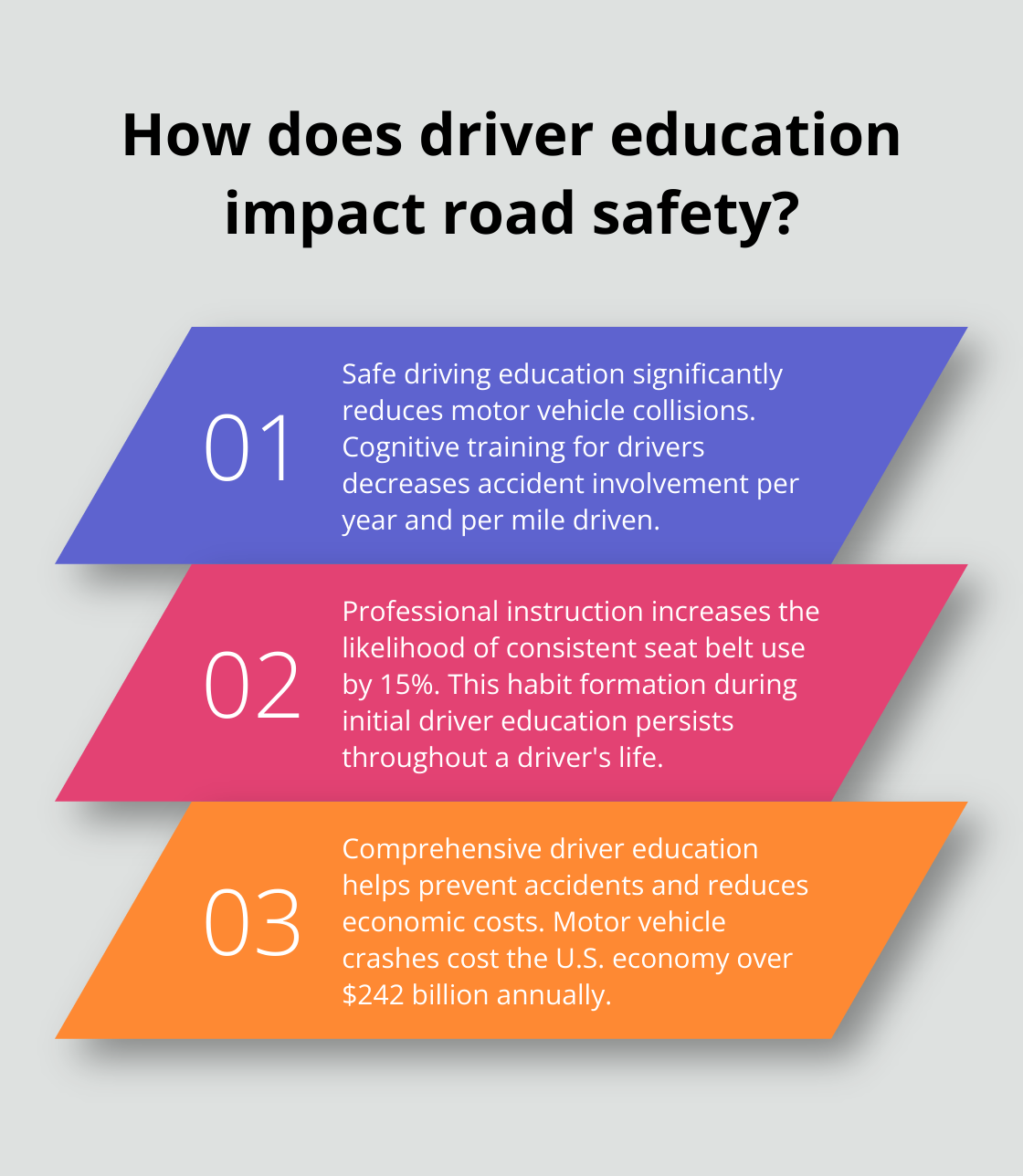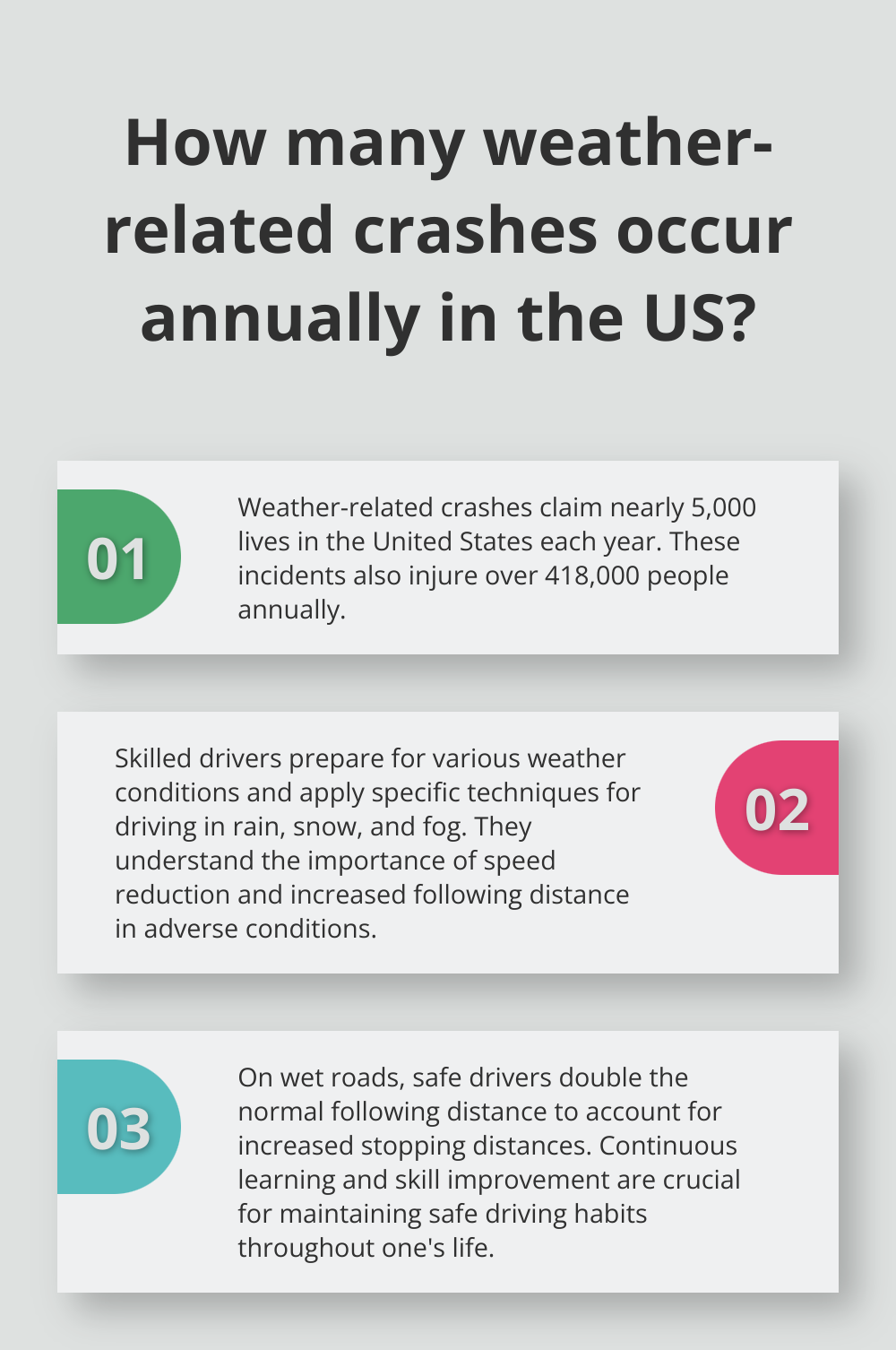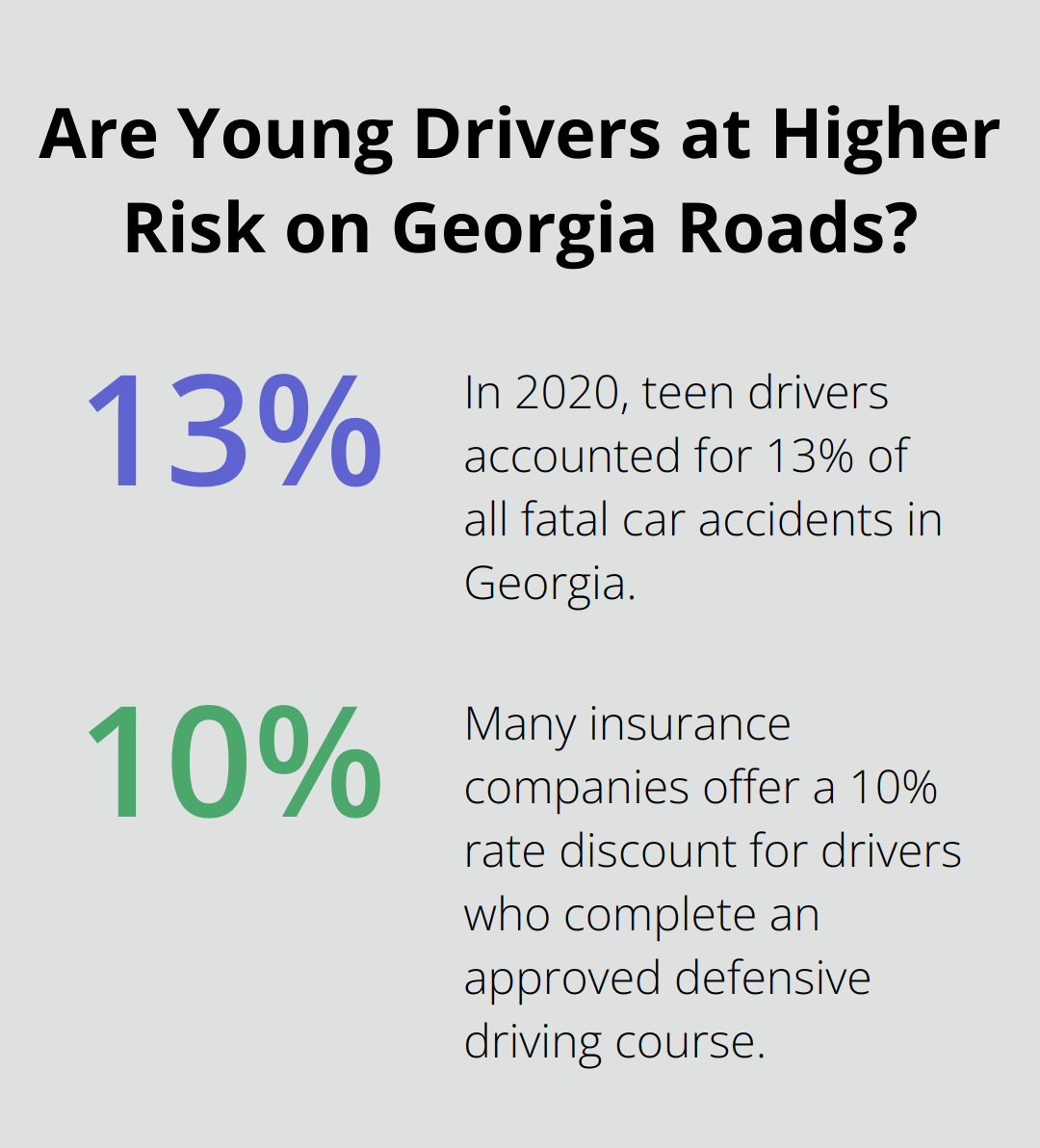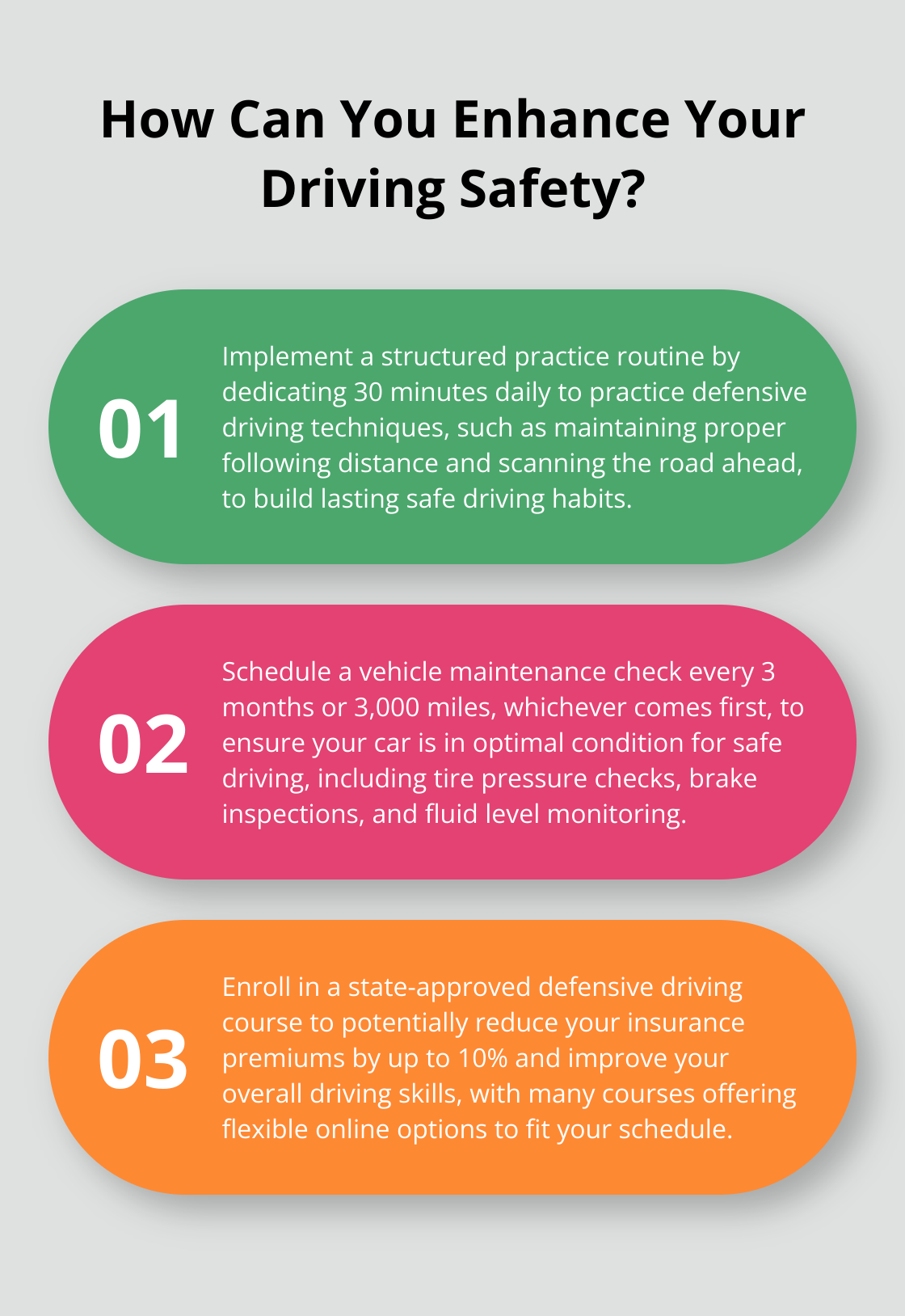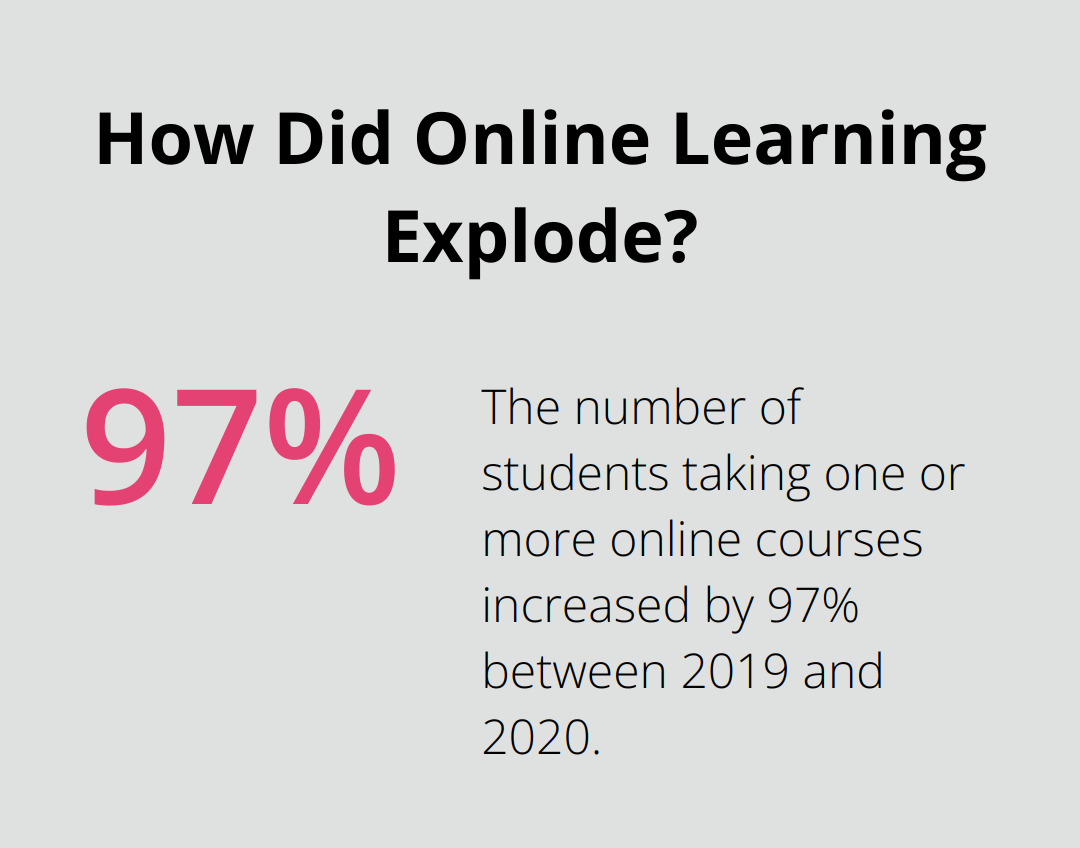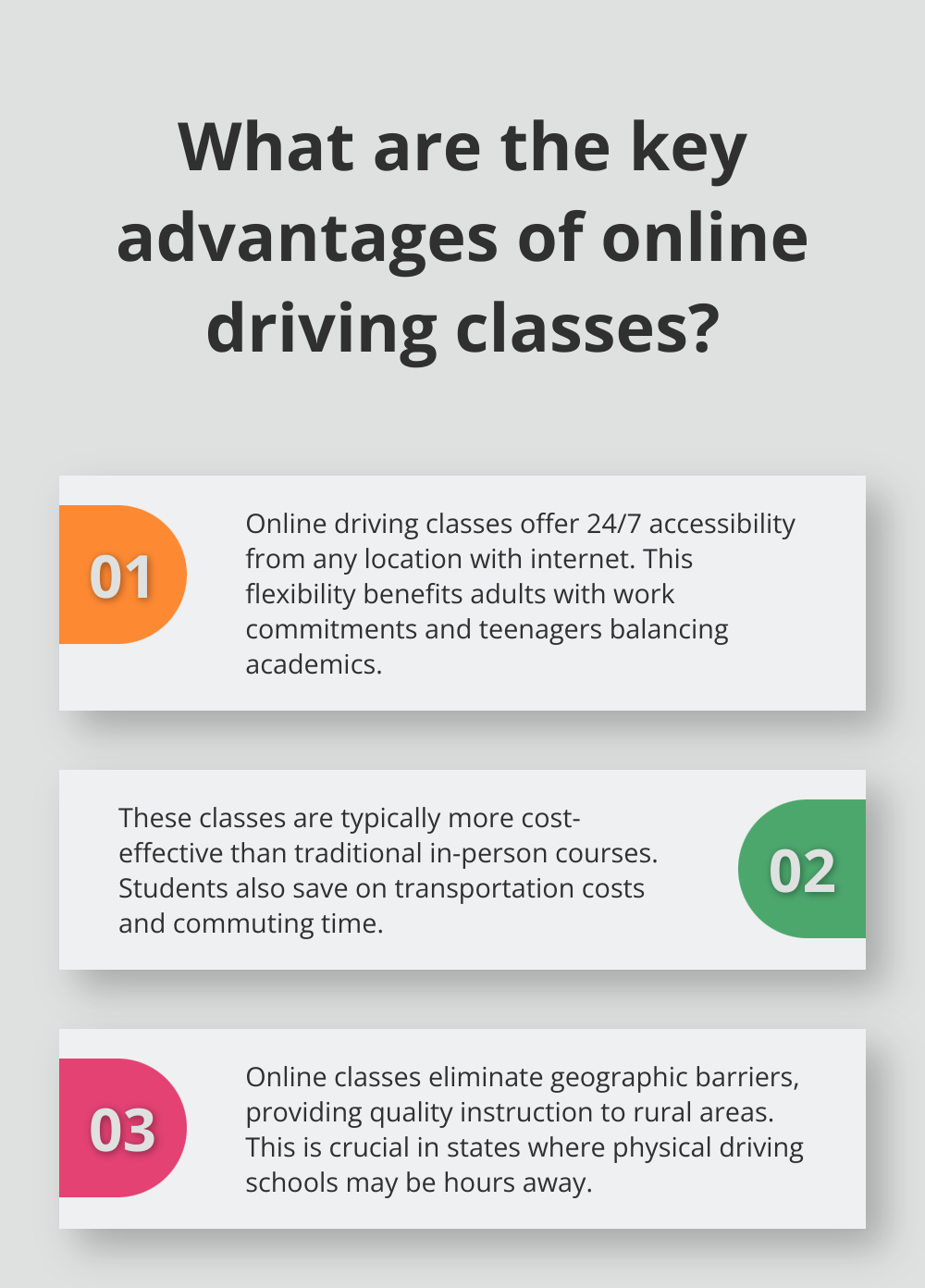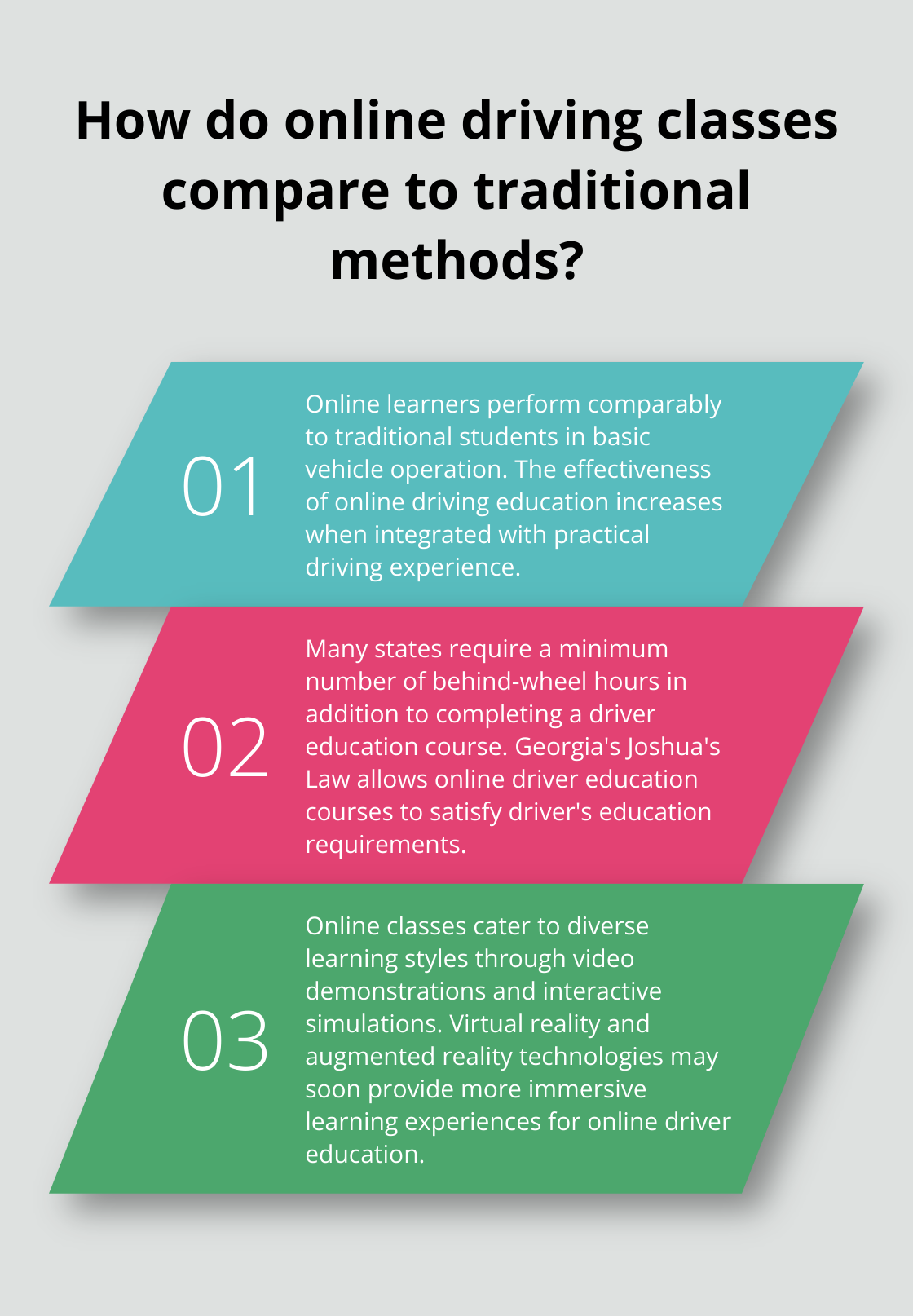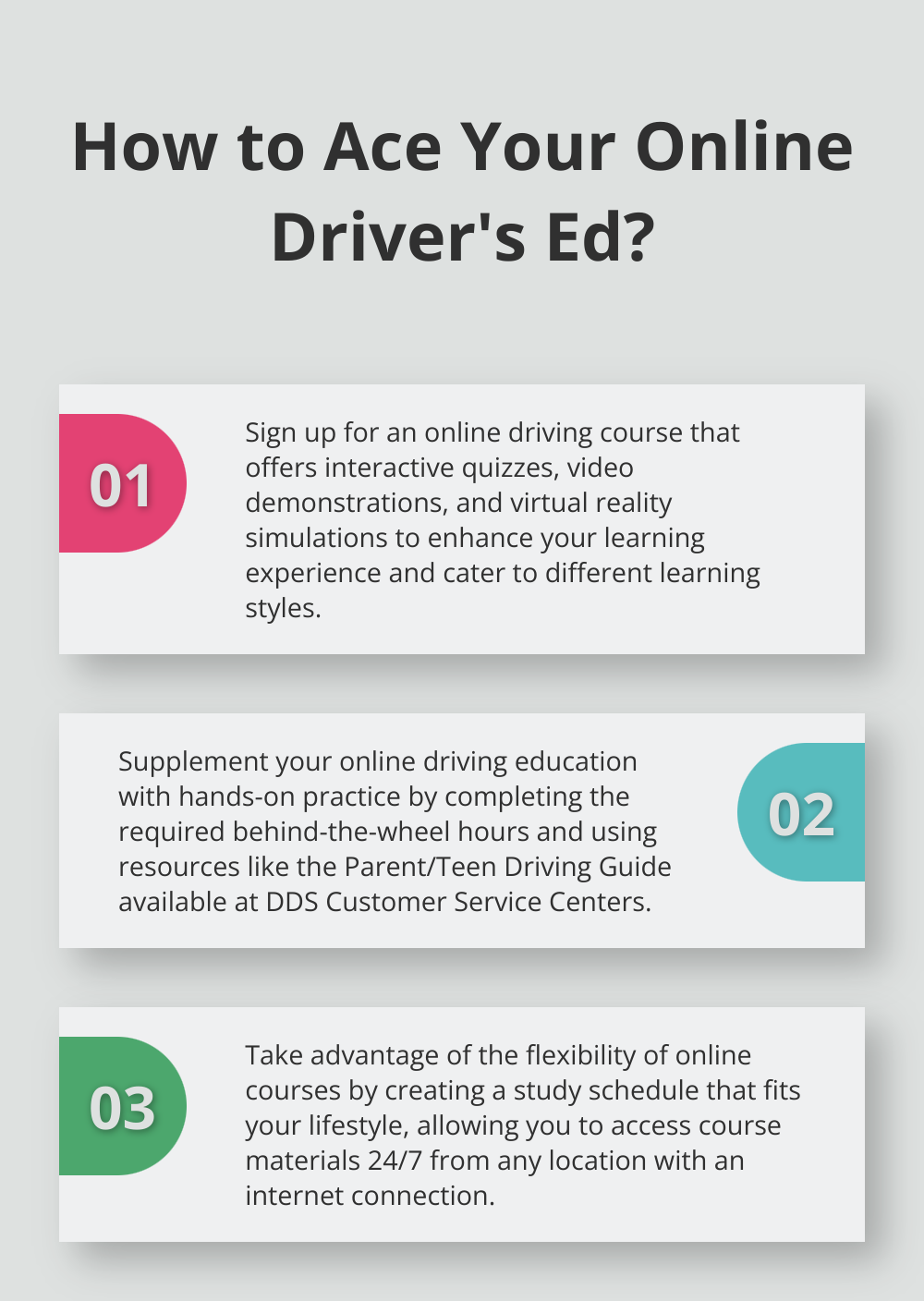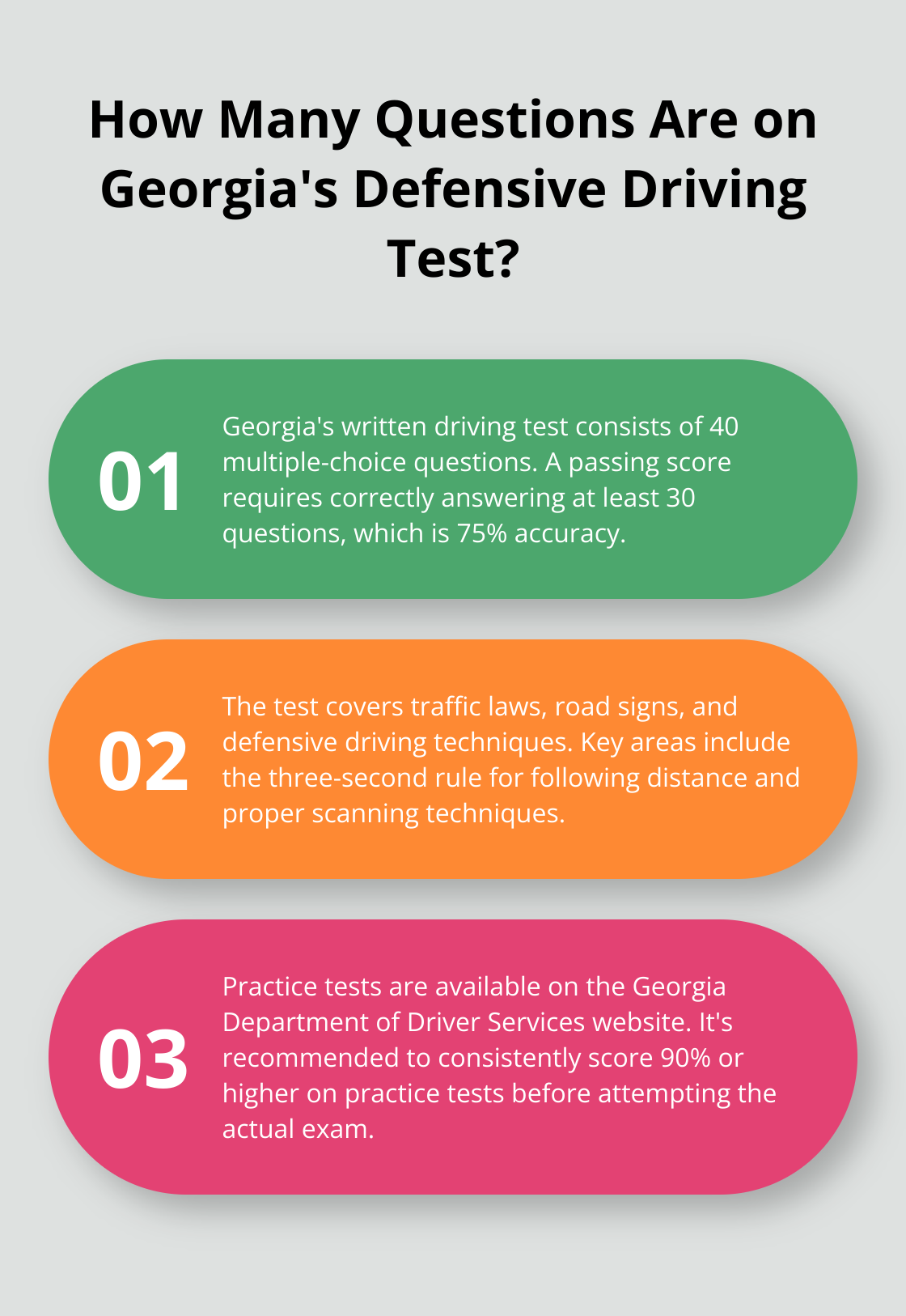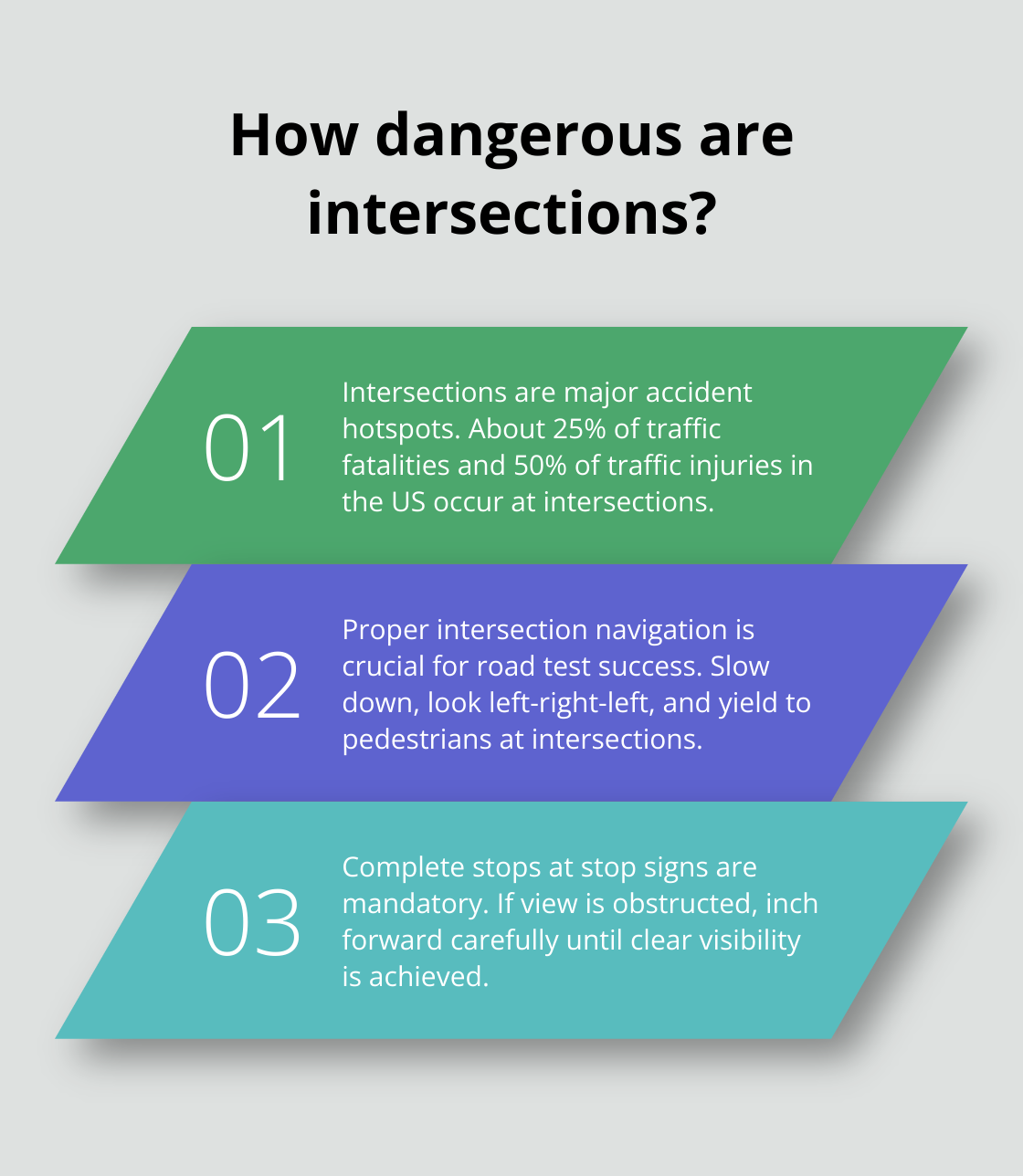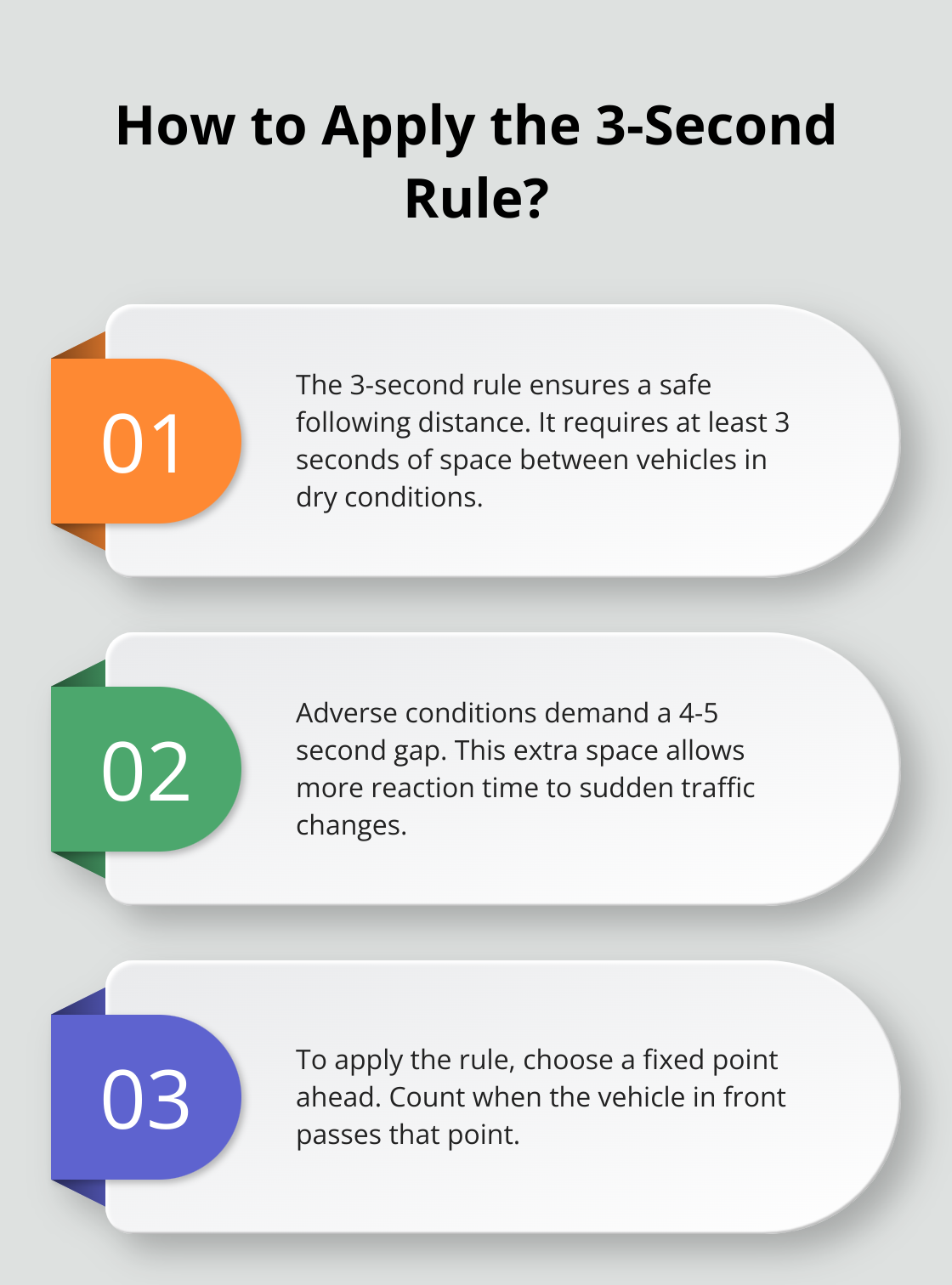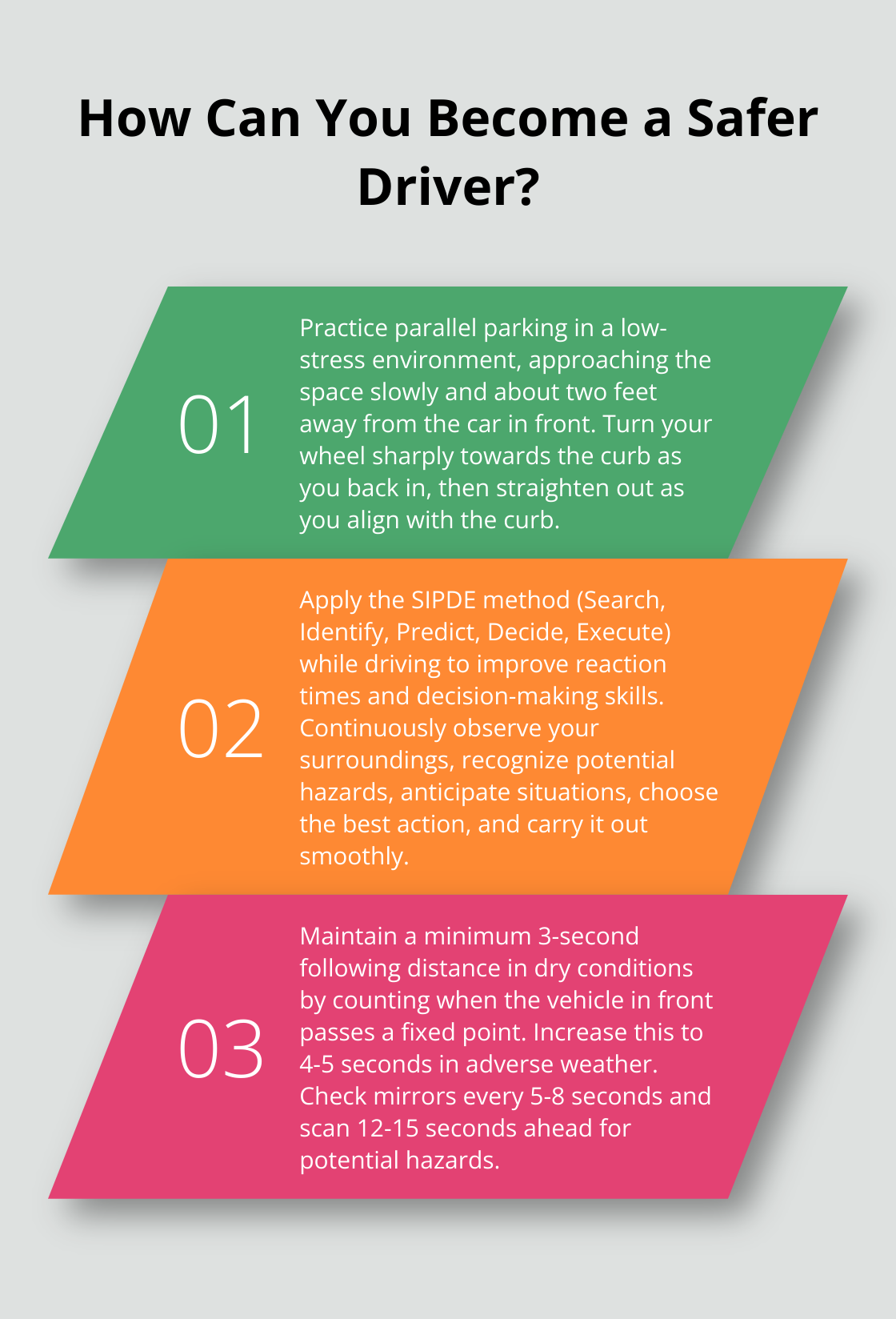Universal Driving Education: What You Need to Know
At The Wiser Driver Driving School, we’ve seen firsthand the impact of comprehensive driver education on road safety.
Universal driving education is a concept that’s gaining traction worldwide, aiming to create a standardized approach to driver training.
This approach addresses the gaps in current systems and ensures all drivers have the same foundational knowledge and skills.
In this post, we’ll explore what universal driving education entails and why it’s crucial for creating safer roads for everyone.
Why Universal Driving Education Matters
Universal driving education represents more than a concept; it stands as a necessity in our fast-paced world. Standardized driver training can significantly impact road safety and driver competence.
Saving Lives Through Standardized Training
The belief that human error contributes to 94% of serious crashes is not accurate. Universal driving education aims to reduce accidents by providing comprehensive training to all drivers. States that have implemented more rigorous driver education programs have witnessed up to a 20% reduction in teen driver fatalities (according to a study by the Insurance Institute for Highway Safety).
Bridging the Knowledge Gap
Driver training varies widely across regions, which creates inconsistencies in driver knowledge and skills. A 2020 survey by the AAA Foundation for Traffic Safety found that one in five motorists did not know whether their state had a Slow Down Move Over (SDMO) law. Universal education addresses this issue by establishing a standardized knowledge base. This approach ensures drivers from California to New York understand the same core principles of safe driving.
Adapting to Changing Road Conditions
The driving landscape evolves rapidly with the rise of electric vehicles and advanced driver assistance systems. Universal driving education keeps pace with these changes by incorporating new technologies and safety features into the curriculum. This proactive approach equips all drivers (regardless of their location or background) to handle modern driving challenges.
Enhancing Global Mobility
As our world becomes increasingly interconnected, the need for universal driving standards grows. Drivers who relocate or travel frequently benefit from consistent education that applies across borders. This standardization facilitates smoother transitions and reduces confusion when driving in new environments.
Promoting Sustainable Driving Practices
Universal driving education provides an opportunity to instill eco-friendly driving habits on a large scale. By including modules on fuel-efficient driving techniques and the environmental impact of vehicles, we can create a generation of drivers who prioritize sustainability (a critical factor in combating climate change).
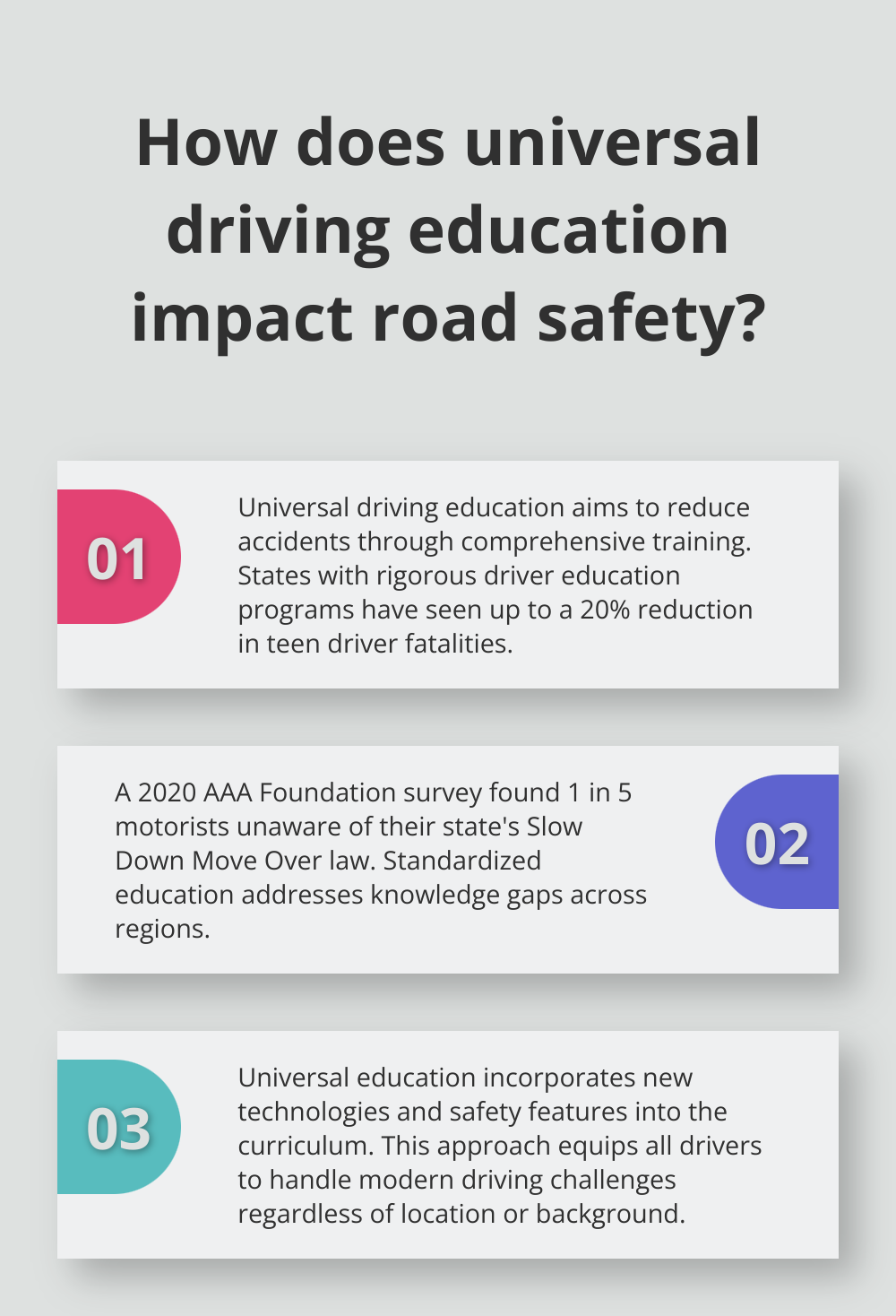
The implementation of universal driving education promises to create a safer, more informed driving population. This approach sets the stage for our next discussion: the key components that make up a comprehensive universal driving education program.
What Makes Universal Driving Education Effective?
Universal driving education encompasses more than just learning traffic rules. Key elements contribute to creating safer, more competent drivers.
Comprehensive Theoretical Foundation
A solid grasp of traffic laws, road signs, and safety regulations forms the backbone of any good driving education program. It’s not just about memorizing rules; students must understand the reasoning behind these regulations. The National Highway Traffic Safety Administration reports that proper understanding and adherence to traffic signs can reduce the risk of crashes by up to 25%.
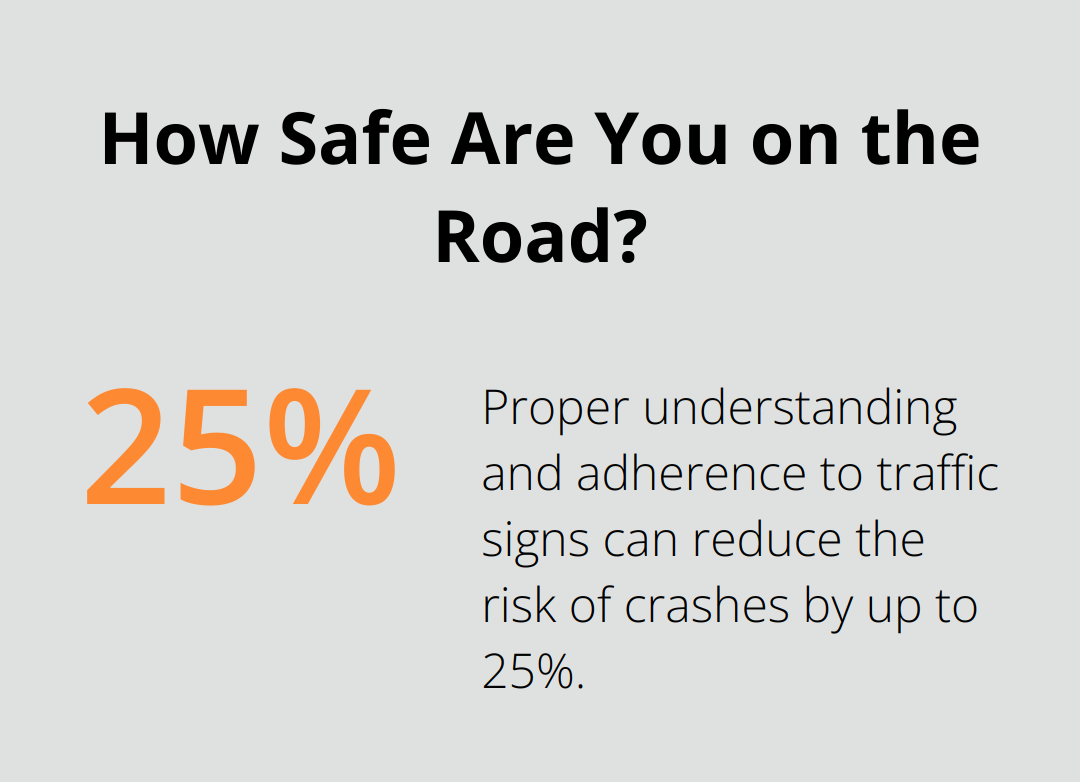
Effective curricula go beyond basic rules. They include local traffic laws, ensuring that drivers are well-versed in regulations specific to their area. This localized approach improves compliance and reduces confusion, especially for new drivers.
Hands-On Practical Training
Theory alone doesn’t suffice. Extensive practical training is essential. This hands-on approach includes mastering vehicle control, learning defensive driving techniques, and developing keen hazard perception skills.
Defensive driving is a critical aspect. The National Safety Council recognizes the power of defensive driving skills training in reducing crashes, saving lives and preventing injuries. Students should practice these techniques in various scenarios, from busy urban streets to quiet country roads.
Hazard perception is another vital skill. Advanced simulators and real-world practice help sharpen this ability. Studies show that drivers with better hazard perception skills are involved in fewer accidents.
Psychological Preparedness
Driving isn’t just about physical skills; it’s also a mental challenge. Effective programs incorporate psychological aspects into training, focusing on risk assessment, decision-making under pressure, and fostering a responsible attitude towards driving.
Risk assessment training helps drivers identify potential dangers before they become immediate threats. This proactive approach significantly reduces reaction times in critical situations.
Addressing the attitude towards driving is equally important. Interactive workshops and real-life scenario discussions can help cultivate this mindset.
Technological Integration
Modern driving education should incorporate the latest technological advancements. This includes training on advanced driver assistance systems (ADAS), electric vehicle operation, and the use of navigation tools. Familiarity with these technologies prepares drivers for the evolving automotive landscape.
Continuous Assessment and Feedback
Effective programs don’t just teach; they evaluate and provide ongoing feedback. Regular assessments help identify areas for improvement, while constructive feedback guides students towards better driving practices. This continuous improvement approach ensures that drivers develop and maintain their skills over time.
The combination of these elements creates a comprehensive, effective universal driving education program. Such an approach not only prepares drivers for their tests but equips them with lifelong skills for safe and confident driving. As we move forward, it’s important to consider how these principles can be implemented on a broader scale to create truly universal driving education standards.
How to Implement Universal Driving Education
Universal driving education implementation requires collaboration between governments, educational institutions, and technology providers. This complex task presents both challenges and opportunities in standardizing driver education. Here’s how we can make universal driving education a reality:
Create a Global Curriculum
The first step in implementing universal driving education involves the development of a standardized curriculum applicable across different regions. This curriculum should cover essential topics like traffic laws, road safety, and vehicle operation, while allowing for regional variations to address local driving conditions and regulations.
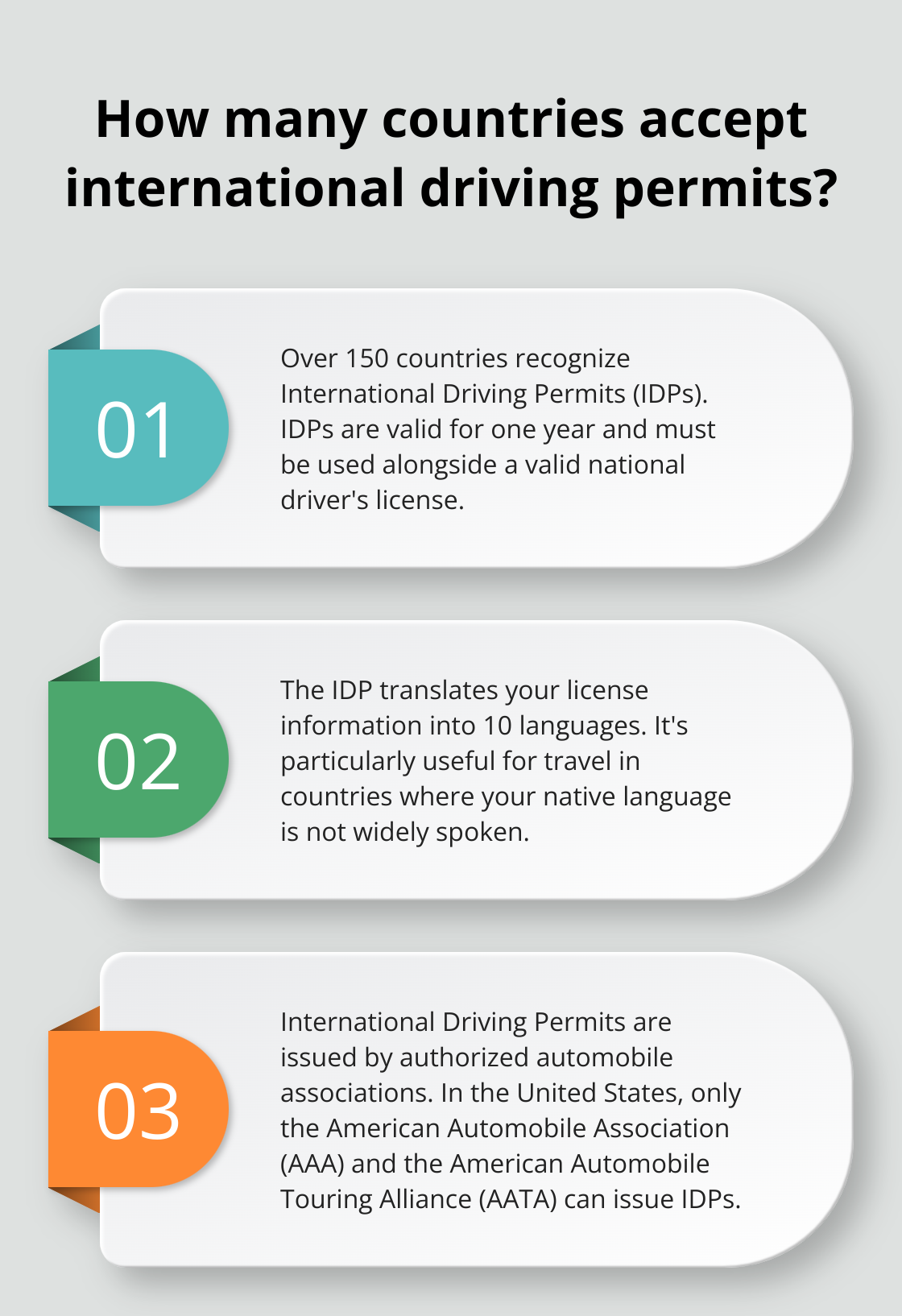
The National Highway Traffic Safety Administration (NHTSA) has taken steps in this direction with its Novice Teen Driver Education and Training Administrative Standards (NTDETAS). These standards provide a framework that could adapt for a global curriculum. We can create a comprehensive education program that prepares drivers for diverse road conditions and driving cultures by building on existing models and incorporating best practices from around the world.
Leverage Technology for Accessible Learning
Technology plays a key role in making universal driving education accessible and engaging. Virtual reality (VR) and augmented reality (AR) simulations provide immersive learning experiences that replicate real-world driving scenarios without the associated risks. These technologies allow students to practice decision-making and hazard perception in a safe environment.
Online learning platforms offer flexibility for students to access educational content at their own pace. A blended learning approach combines the convenience of online study with the irreplaceable experience of hands-on training (which many successful driving schools have already implemented).
Address Cultural Differences
One of the biggest challenges in implementing universal driving education is addressing the diverse cultural attitudes towards driving that exist around the world. What one country considers acceptable driving behavior might appear reckless in another.
To overcome this, the curriculum should include modules on cultural awareness and adaptability. These modules can help drivers understand and respect different driving norms when traveling abroad. Additionally, the involvement of local driving experts in curriculum development ensures that regional nuances receive proper attention.
Ensure Instructor Quality
The success of universal driving education heavily depends on the quality of instructors. The establishment of global standards for instructor certification is essential. This could involve the creation of an international accreditation body that oversees instructor training and certification.
Many reputable driving schools prioritize ongoing training for their instructors to keep them updated on the latest teaching methods and driving technologies. This approach could scale up to create a global network of highly skilled driving instructors.
Integrate with Licensing Systems
For universal driving education to achieve true effectiveness, it needs integration with licensing systems worldwide. This could involve the creation of a standardized international driving license that receives recognition across borders. The European Union’s standardized driving license system provides a model that could expand globally.
Final Thoughts
Universal driving education transforms road safety and driver competence. It standardizes training across regions, reduces accidents, bridges knowledge gaps, and creates a more adaptable driving population. The implementation requires effort from policymakers, educational institutions, and driving schools to develop comprehensive curricula that address theoretical knowledge, practical skills, and psychological aspects of driving.
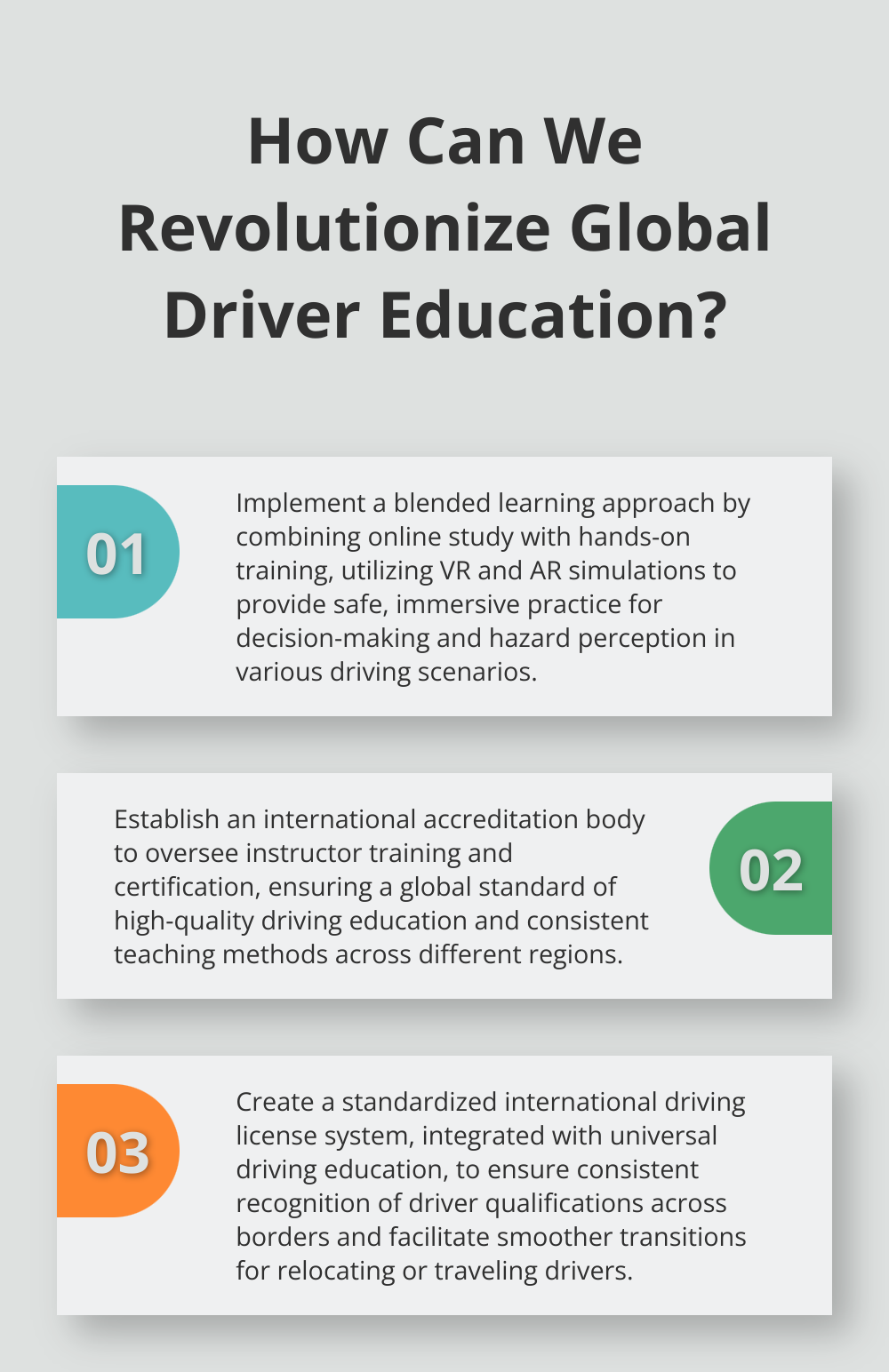
At The Wiser Driver Driving School, we recognize the importance of continuous education in creating safer roads. Our comprehensive programs boost driving confidence for drivers of all ages, offering state-required classes, personalized lessons, and defensive driving courses. We believe that ongoing learning and skill development maintain high standards of road safety.
Universal driving education creates a culture of responsible driving that lasts a lifetime. It invests in safer roads, reduced accidents, and a more skilled driving population (a goal worth pursuing). The road to universal driving education may challenge us, but the destination promises a world with safer, more competent drivers.



